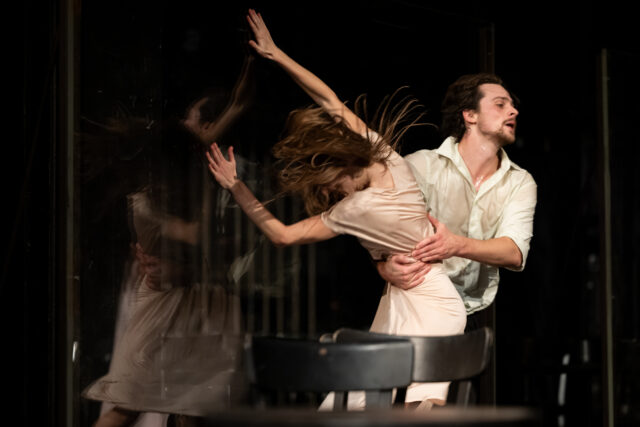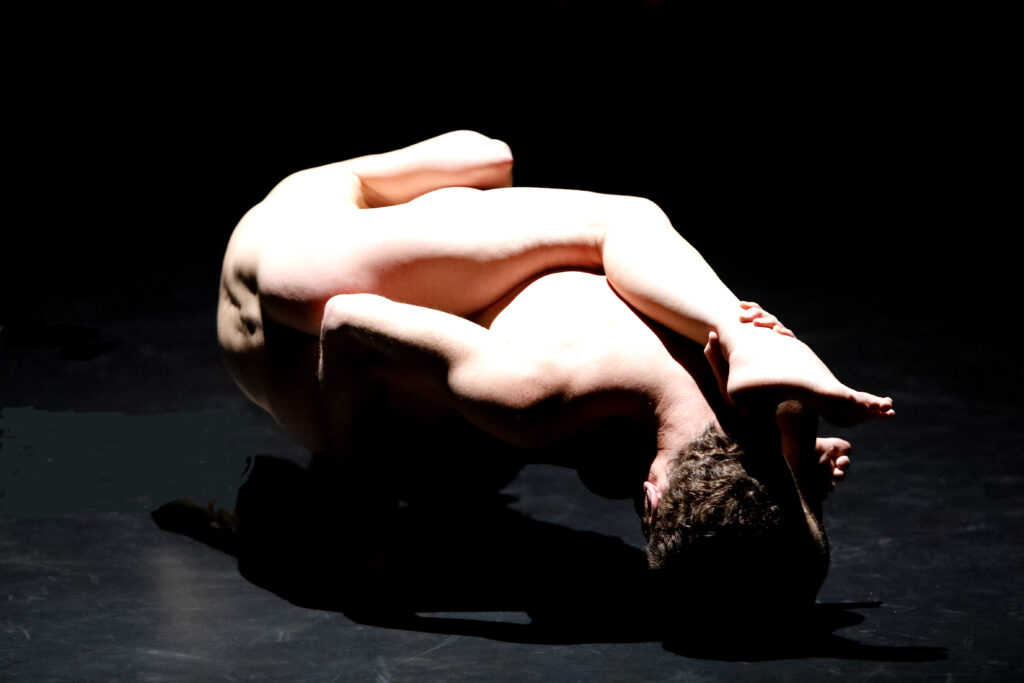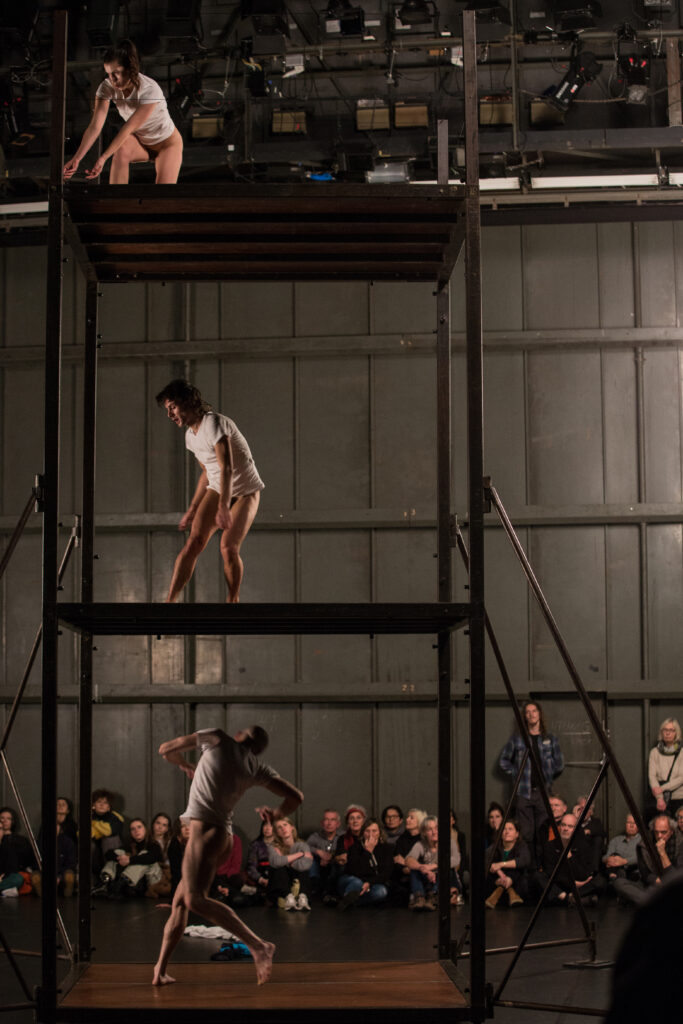
For the English version, please, scroll down
BERLINO – Il 7 e l’8 marzo 2024, come ultimo appuntamento della Performing Arts Season del Berliner Festspiele, sono andati in scena tre pezzi sotto il titolo Club Amour.
Boris Charmatz, direttore artistico del Tanztheater Wuppertal dall’agosto 2022 (il quinto direttoredalla morte della Bausch), mette insieme due sue coreografie, Aatt enen tionone herses, duo (Excerpt from “herses (une lente introduction)1997), con Café Müller di Pina Bausch.
Aat enen tionon, la bellezza del sentirsi e non toccarsi
Creato da Charmatznel nel 1996,quando aveva poco più di vent’anni, Aat enen tionon è una coreografia per tre danzatori. Dean Biosca, Christopher Tandy e Letizia Galloni sono disposti ognuno sul piano di una torre a tre livelli. I danzatori, nudi e costretti in spazi angusti, senza alcuna possibilità di toccarsi o guardarsi, riducono i loro movimenti all’essenziale. Nonostante ciò la loro danza non perde d’intensità o forza. I loro corpi cadono di continuo al suolo e in alcuni momenti sembrano urtare pareti che non esistono. La coreografia è esplosiva e potente, piena di un’energia dolorosa. Neanche la mancanza di contatto sembra inibire la loro capacità di ‘sentirsi’ e restare connessi. Il pubblico, al contrario, può soffermarsi ora su l’uno ora sull’ altro artista, apprezzandone i movimenti e avendo una visione d’insieme. La tensione che emerge da questi tre corpi separati, guidati esclusivamente dalla propria logica interna, è allo stesso tempo semplice e potente.
Herses, duo, la simbiosi può essere anche opprimente
Se il trio gioca sulla separazione e l’isolamento, il duo Herses, duo (1997), al contrario, è basato interamente sul contatto, su un’osmosi completa. Boris Charmatz e Johanna Lemke fanno il loro ingresso mano nella mano, completamente nudi. Lui si sdraia a terra, lei scivola e rotola sul suo corpo, e quando lui si muove lei trova sempre nuovi appoggi e una forma nuova per stare su di lui. Annodano i loro corpi come se volessero formare un’unità inseparabile. Gli spostamenti di peso sono eseguiti qui in modo estremamente sensibile. Ma il desiderio di una simbiosi completa ha anche qualcosa di opprimente.
Café Müller , un capolavoro che è sempre un piacere rivedere
Dopo un intervallo di circa 45 minuti, finalmente si assiste a Café Müller (1978), probabilmente ispirato e basato sui ricordi d’infanzia della madre del Tanztheater, la cui famiglia aveva un caffè in Germania durante la seconda guerra mondiale.
Il palco è pieno di tavolini e sedie in disordine, molti dei qual caduti sul pavimento.
Quando la prima danzatrice che entra in scena inizia a muoversi, urta contro una sedia.Ha le braccia tese e i polsi esposti e ripetutamente urta contro le pareti del caffe. Un uomo le apre la strada facendo cadere rumorosamente sedie e tavoli che le sono davanti.
Una donna vestita di bianco si scontra con un uomo e i due si abbracciano. Un altro uomo interviene e muove la coppia facendola baciare e poi mettendo lei nelle braccia di lui. Nelle tipiche sequenze ripetitive della Bausch la scena si ripete a una velocità sempre più sostenuta, finché la coppia non resta sola, stretta in un abbraccio. La coppia ritorna l’uno all’altra in momenti diversi nel corso del pezzo, mentre simultaneamente si svolgono altre azioni. Una donna con un lungo cappotto cammina frettolosamente osservando tutto ciò che accade intorno. Un uomo sostiene un’altro uomo per i piedi. Mentre la donna con i polsi esposti continua una danza che sembra un grido disperato.
Lo spettacolo è il capolavoro che tutti conosciamo. Sarebbe facile dire che non è lo stesso pezzo del 1978, perché, ovviamente, non può esserlo. Sembra avere un ritmo più incalzante rispetto all’originale e un’estetica diversa, meno drammatica. L’idea di mettere insieme le tre coreografie, nasce, probabilmente, dal fatto che tutte sono attraversate – in modo assolutamente diverso – da un desiderio di contatto fisico. Ovviamente c’è una differenza abissale nel linguaggio, nei contenuti e nella forma dei lavori di Charmatz a confronto con l’opera della Bausch. Proprio per questa ragione, la pausa di quarantacinque minuti che sembra eccessiva e ingiustificata, diventa assolutamente necessaria.
Ciò detto, Café Müller resta un’opera coreografica commovente, straziante, sublime.

On March 7th and 8th 2024, for the closing night of the Performing Arts Season Berliner Festpiele, three pieces under the name Club Amour were presented. Boris Charmatz, artistic director of the Tanztheater Wuppertal since August 2022 (the fifth director since Bausch’s death), put together two of his choreographies, Aatt enen tionon and Herses, duo (Excerpt from “herses (une lente introduction)1997), with Pina Bausch’s Cafe Müller.
Created by Charmatz in 1996, when he was a bit more than 20 years old, Aatt enen tionon is a choreography for three dancers. Dean Biosca, Christopher Tandy e Letizia Galloni are located in a three story tower, each one of them on one floor. Without the possibility of looking at each other or touching the others, naked and constrained to a narrow space, the dancers reduce their movements to the essential. Their dance never loses intensity or strength. Their bodies constantly fall to the ground and in some moments it seems as if they encounter non existing walls. The choreography is explosive and potent, full with a sort of distressing energy. No matter they can’t contact each other directly, it is evident that they feel each other and keep connected. The audience, on the contrary, can stop at one artist or the other, contemplating all the movements and also having a complete vision of the whole. The tension that emerges from these three separated bodies, only guided by their own interior logic, is simple and powerful at the same time.
If the trio explores separation and isolation, the duet Herses, duo, on the contrary, plays all the time with constant contact, a total osmosis. Boris Charmatz and Johanna Lemke get on the stage taken by the hand and completely naked. He lays down on the ground and she slides and rolls over his body, when he moves she finds new supports and new ways to keep standing on him. They knot their bodies like if they wanted to create an inseparable unity. The weight shifts are executed in an extremely sensitive way. But the desire of total symbiosis has also something oppressing.
After a 45 minute pause, finally the audience assists to Café Müller (1978), probably inspired and based on the childhood memories of Tanztheater’s mother, whose family owned a caffè in Germany during World War II.
The stage is full with a mess of tables and chairs, some of them just lying around on the floor. When the first dancer enters the scene and starts moving, she hits a chair. Her arms are full of tension and she is showing her wrists upfront, suddenly she starts to throw herself repeatedly to the walls of the caffè. A man clears her way, throwing the chairs and tables noisily out of her trajectory. A woman in white encounters a man and they both hug each other. Another man intervenes and moves the couple making them kiss each other and after, he puts the woman in the man’s arms. In one of the typically repetitive Bausch’s sequences, the scene repeats at a higher speed every time until the couple stays alone, in a tight hug. This couple comes together again in different moments during the show while simultaneously other actions happen. A woman with a long jacket walks in a rush watching everything that’s going on around her. A man holds another man by his feet. In the meantime, the lady with the wrists upfront continues her dance that feels like a desperate scream.
The show is actually the masterpiece that we all know. It would be easy to say that it is not the same piece of 1978, because obviously, it can’t be. The rhythm feels tighter and the aesthetics slightly different, less dramatic.The idea of putting these three pieces together, is probably born by the fact that all of them are based -in a very different way- on the desire of physical contact. There are obviously very different languages, contents and forms comparing Charmatz’ work with Bausch’s. That is why the 45 minute pause that can seem excessive and unjustified, at the end, feels even necessary.
That said, Café Müller is a touching , heartbreaking and sublime choreographic piece.

Aatt enen tionon (1996)
Boris Charmatz – Choreography
Yves Godin – Lighting
Gilles Touyard – Vertical Structure
Hubertus Biermann, Olivier Renouf – Sound
PJ Harvey – Sound Material
Julia Cima* – Collaboration to Transmission
Azusa Seyama-Prioville – Assistant 2024
With Dean Biosca, Letizia Galloni, Christopher Tandy (19:00)
Eli Cohen*, Némo Flouret*, Christopher Tandy (21:00)
herses, duo
Excerpt from “herses (une lente introduction)“ (1997)
Boris Charmatz – Choreography
Stefan Fraunberger– Music
With Boris Charmatz, Johanna Elisa Lemke*
World premiere 27.9.1997, Le Quartz, Scène nationale de Brest
With Boris Charmatz, Julia Cima, Vincent Dupont, Myriam Lebreton, Sylvain Prunenec
Café Müller (1978)
Pina Bausch – Direction and Choreography
Rolf Borzik – Set and Costume Design
Marion Cito, Hans Pop – Collaboration
Henry Purcell – Music
Barbara Kaufmann – Rehearsal Director Restaging
With Naomi Brito, Milan Kampfer, Reginald Lefebvre, Nicholas Losada, Tsai-Wei Tien, Tsai-Chin Yu














































